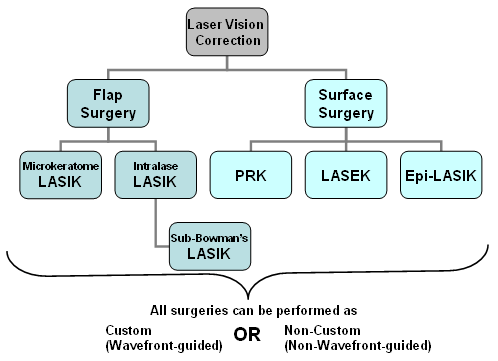Curious About The Distinctions Between SMILE, LASIK, And PRK Eye Surgeries?
Curious About The Distinctions Between SMILE, LASIK, And PRK Eye Surgeries?
Blog Article
Published By-Weber Vincent
If you have actually been thinking about SMILE eye surgery, you may question just how it compares to LASIK and PRK. Each procedure has its very own set of advantages and considerations. From quicker recovery times to prospective dangers, there are essential differences you need to understand prior to making a decision. Understanding these differences will certainly help you make an enlightened selection that straightens with your specific demands and expectations. Interested to understand even more about exactly how these treatments compare carefully? Go on exploring to acquire an extensive understanding of SMILE, LASIK, and PRK.
SMILE Eye Surgery Overview
If you're taking into consideration SMILE eye surgical treatment, you'll locate it to be a minimally invasive procedure with a fast recuperation time. Throughout SMILE (Little Cut Lenticule Extraction), a laser is made use of to develop a little, exact laceration in the cornea to eliminate a little item of tissue, reshaping it to fix your vision. This varies from LASIK, where a flap is produced, and PRK, where the external layer of the cornea is totally removed.
Among the essential benefits of SMILE is its minimally invasive nature, resulting in a faster healing process and less pain post-surgery. The healing time for SMILE is reasonably fast, with lots of clients experiencing boosted vision within a day or more. This makes it a popular option for those looking for a practical and reliable vision modification treatment. Additionally, SMILE has been revealed to have a lower danger of completely dry eye syndrome contrasted to LASIK, making it a favorable option for people worried about this possible negative effects.
Differences Between SMILE, LASIK, and PRK
When contrasting SMILE, LASIK, and PRK eye surgeries, it's important to recognize the distinctive methods used in each procedure for vision correction.
SMILE (Little Cut Lenticule Extraction) is a minimally intrusive procedure that entails creating a tiny laceration to extract a lenticule from the cornea, reshaping it to remedy vision.
LASIK (Laser-Assisted Sitting Keratomileusis) includes producing a thin flap on the cornea, using a laser to reshape the underlying tissue, and then repositioning the flap.
How Much Does It Cost For LASIK Eye Surgery (Photorefractive Keratectomy) eliminates the outer layer of the cornea prior to improving the tissue with a laser.
The main difference lies in the method the cornea is accessed and dealt with. Eye Surgery Las Vegas Nv is flapless, making it a great option for individuals with slim corneas or those associated with call sports. https://see-lasik08642.howeweb.com/31799989/how-lasik-reshapes-the-cornea-to-deal-with-astigmatism to the flap production, however it might position a greater danger of flap-related issues. PRK, although having a much longer recovery period, avoids flap-related issues altogether.
Recognizing these variations is important in selecting one of the most suitable treatment for your vision improvement requirements.
Advantages And Disadvantages Comparison
To review the advantages and downsides of SMILE, LASIK, and PRK eye surgical treatments, it's vital to think about the particular benefits and possible limitations of each treatment. SMILE surgery offers the advantage of a minimally invasive procedure, with a smaller laceration and potentially quicker healing time compared to LASIK and PRK. click here lowers the risk of completely dry eye post-surgery, a common side effect of LASIK. Nonetheless, SMILE might have limitations in treating greater degrees of nearsightedness or astigmatism contrasted to LASIK.
LASIK surgical procedure gives rapid aesthetic healing and minimal discomfort during the treatment. It's highly reliable in dealing with a wide variety of refractive errors, consisting of myopia, hyperopia, and astigmatism. Yet, LASIK carries a risk of flap difficulties, which can influence the corneal framework.
PRK eye surgical treatment, while not as popular as LASIK, avoids creating a corneal flap, minimizing the threat of flap-related issues. It's suitable for clients with thin corneas or uneven corneal surface areas. Nonetheless, PRK has a longer recovery time and might involve extra pain during the healing procedure.
Conclusion
So, when it pertains to selecting between SMILE, LASIK, and PRK, think about it like selecting the perfect set of footwear. SMILE is like a streamlined, comfy pair of sneakers - quick and simple.
LASIK is more like stylish high heels - flashy and fast, but with some possible risks.
PRK resembles tough treking boots - reputable and resilient, yet requiring a bit more effort and time.
Inevitably, the very best choice relies on your specific requirements and choices.
